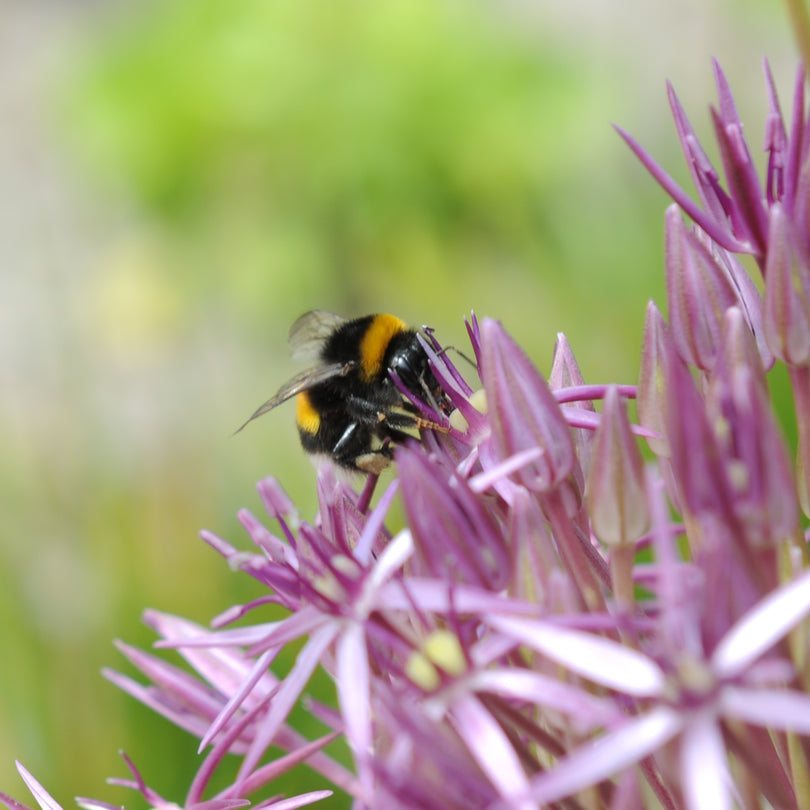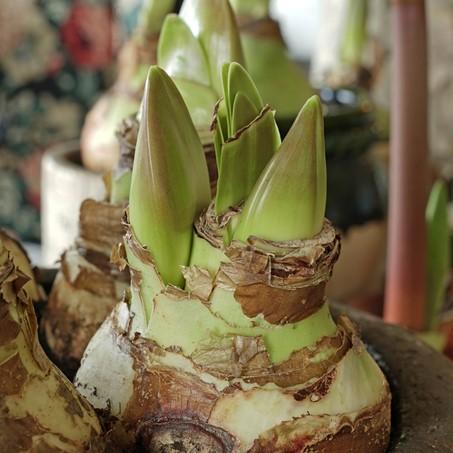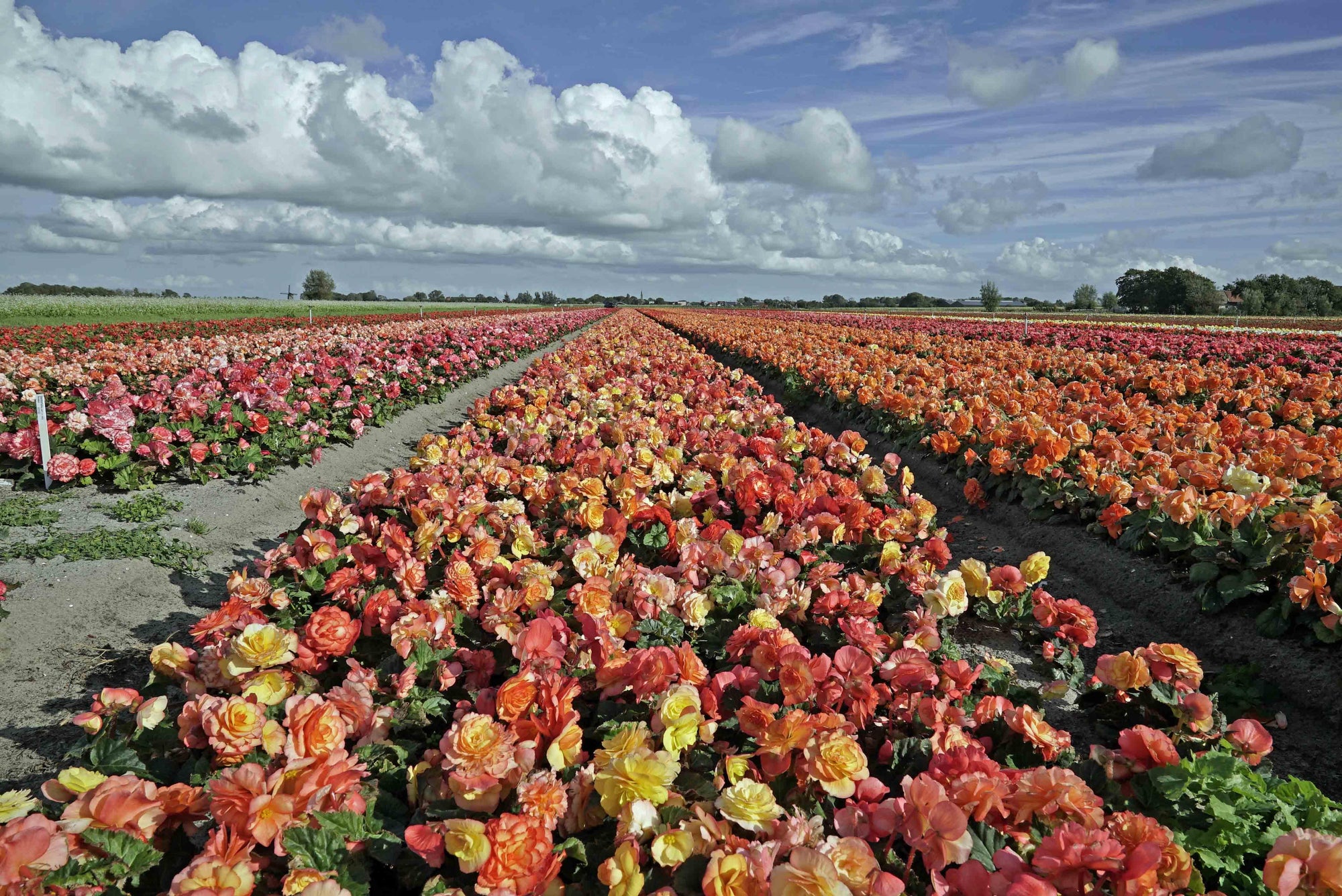One of the frequently asked questions from readers was how the propagation of flower bulbs works. A good question of course, we know that all living beings can grow, but how does this work with all the different bulb crops?
Especially the propagation was the big question mark in this case. Every year the bulb growers sell a lot of bulbs and yet they keep planting just as many, sometimes even more, every year.
It is impossible to make a general story of this that applies to all types of bulbs, because every bulb plant has its own way of propagating. Because it is now Amaryllis time, I will start with the Amaryllis.

Before the Amaryllis is cut into pieces, it is first left naked, after which the head and bottom are pruned off.

The bulb is then cut into pieces.

The pieces are put away for a day to dry slightly.

After this, the slices are cut into pieces again, the so-called 'double scaling'. It is important here that each slice has a piece of bulb bottom and two pieces of bulb skirt.

Here in 1 photo the torture of the Amaryllis. Head and butt have been removed, the parts and the double scales are clearly visible. It is also clear here that the bulb bottom is still present on each piece. On this piece of bulb bottom a new bulb will grow in the coming months.

The parts are wrapped in vermiculite or potting soil in plastic bags to prevent drying out. They are then stored for at least three months at a temperature of around 20 degrees Celsius.

After about three months it looks like this, new bulbs are formed on the bulb bottom. The energy to grow is sucked from the scales.

The segments are now neatly planted in the greenhouse where they are pampered for three years so that they can grow into large bulbs again.

During this three-year cultivation, the bulbs are dug up annually and then replanted more widely so that the bulbs can grow thicker. The last year, flowers also appear, which are removed, or if the market demands it, neatly cut and sold at the flower auction.

At the end of three years, this is what it looks like in the Amaryllis grower's greenhouse. All the misery is forgotten and forgiven and from each divided bulb, 50 beautiful new thick Amaryllis bulbs have grown.

Beautifully beautiful round bulbs. In this photo you can also see how the Amaryllis produces a small bulb during normal cultivation, if it is thick enough. You also have to grow this small bulb for three years if you want to get a thick one. If you cut this thick bulb into pieces and sections again, you will have 50 new thick bulbs after three years.
Every bulb you buy in the Fluwel webshop originates from a mother bulb that has undergone the same torture.
Greetings and see you next week,
Carlos van der Veek













